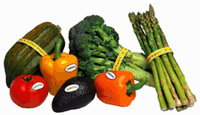 ROYAL FLORA RATCHAPHRUEK 2006
ROYAL FLORA RATCHAPHRUEK 2006
International Horticultural Exposition for His Majesty the King“Royal Flora Ratchaphruek 2006” is the first ever International Horticultural Exposition receiving recognition from The Association of International Horticulture Producers (AIPH) to be held in Thailand.

In 2006, the Thai nation comes together to celebrate the most auspicious occasions of
His Majesty King Bhumibol Adulyadej’s 60th Anniversary or the Diamond Jubilee of His Majesty’s Accession to the Throne together with His Majesty’s 80
th Birthday Anniversary.

To mark this momentous occasion, “Royal Flora Ratchaphruek” is one of the grand celebrations being hosted by the Royal Thai Government in honor of His Majesty King Bhumibol Adulyadej (Rama IX), the ninth ruler of the illustrious Chakri Dynasty and the world’s longest reigning monarch. His Majesty is ‘Father of the Nation’ and ‘Beloved King’ to the Thai people.
Royal Flora Ratchaphruek 2006 represents a concerted effort of the Thai people to create one of the world’s most beautiful international horticultural expositions as an expression of deep love and respect for their Beloved King who has won the hearts of Thai people across the Kingdom through His Majesty’s tireless dedication to bringing about a better quality of life of for the Thai people through His Majesty’s gifts in agricultural projects as well as valuable lessons in life.
 Through Royal Flora Ratchaphruek 2006 -- International Horticultural Exposition for His Majesty the King, the Thai people come together to express their utmost gratitude for His Majesty’s benevolence, care and concern. Time-honored traditions will be observed; only the very finest available will be presented to the ‘Devaraja’ or ‘Divine King’. This will be an exposition that deserves the name “International Horticultural Exposition for His Majesty the King.
Through Royal Flora Ratchaphruek 2006 -- International Horticultural Exposition for His Majesty the King, the Thai people come together to express their utmost gratitude for His Majesty’s benevolence, care and concern. Time-honored traditions will be observed; only the very finest available will be presented to the ‘Devaraja’ or ‘Divine King’. This will be an exposition that deserves the name “International Horticultural Exposition for His Majesty the King.

THE SIGNIFICANCE AND SYMBOLISM OF RATCHAPHRUEK FLOWERS
In Thailand, ‘Ratchaphruek’ -- the Golden Shower Tree (Cassia fistula L.), is considered to be an auspicious tree.
 The dazzling yellow flowers signify two out of the three most important institutions of the Thai nation – the national religion, Buddhism, and His Majesty King Bhumibol Adulyadej who was born on Monday. Yellow is the color associated with Monday.
The dazzling yellow flowers signify two out of the three most important institutions of the Thai nation – the national religion, Buddhism, and His Majesty King Bhumibol Adulyadej who was born on Monday. Yellow is the color associated with Monday.
The shape of the pollen resembles the Thai numeral for nine; another fascinating characteristic that is symbolic of His Majesty King Bhumibol Adulyadej, Rama IX, the ninth ruler of the illustrious Chakri dynasty.
Given these many auspicious associations, the bright and cheerful yellow blossoms of the Ratchaphruek tree have been the inspiration for the name and logo of Thailand’s first International Horticultural Exposition for His Majesty the King -- Royal Flora Ratchaphruek 2006.
Thai name: Ratchaphruek
Common name: The Golden Shower Tree Scientific name: Cassia fistula L.
The Golden Shower Tree is also known by its less familiar common names including “purging cassia”, “pudding pipe tree” and “Indian laburnam”.

GARDENS FOR THE KING
- Path of Wisdom

His Majesty the King’s care and concern for the lives of the people, combined with His intimate knowledge and expertise in agriculture have resulted in the introduction and successful implementation of thousands of Royal Projects which have improved the quality of life for millions.
“Gardens for the King” which comprises “International Gardens” and “Corporate Gardens” will not only nourish the visitors’ eyes with cultural and horticultural beauty but will also enrich their minds with exotic cultures and knowledge of agricultural Royal Projects.
- INTERNATIONAL GARDEN

This area is allocated for exhibitions of national blossoms, blooms, and horticulture as well as the cultural arts and architecture of 30 countries from around the world.
Each garden will reflect a historic diplomatic, cultural and trade ties between nations, people or, where possible, royal families of the two countries.
Participating Countries
Japan, South Korea, Vietnam, Malaysia, Cambodia, Lao PDR, Indonesia, India, Nepal, Bhutan, Pakistan, China, Brunei, Turkey, Spain, Belgium, Netherlands, Bulgaria, Mauritania, Kenya, Nigeria, Gabon, Sudan, Morocco, Tunisia, South Africa, Burundi, Qatar, Iran, Yemen, Trinidad & Tobago, Canada
- CORPORATE GARDEN
Each of the 80 gardens from state enterprises and domestic and international major corporations will utilize creative garden design to visually illustrate and commend a range of concepts, theories and ‘best practices’ behind Royal Projects initiated by His Majesty the King and which reflect His Majesty’s tremendous insight and ingenuity.
- The Way of Life

Encompassing an area of over a hundred thousands square meters, the “Thai Tropical Garden” is a colossal classroom that showcases the vast diversity in the way of life of tropical lands. Visitors will be able to witness first-hand an extensive variety of tropical horticulture encompassing fruits, plants, flowers and herbs.
As visitors stroll down the path away from the leisurely ambience of the Expo Plaza, the center point of the exposition activities, amenities and services, they find themselves being drawn towards the Royal Pavilion.
- THE ROYAL PAVILION
The Way of Light
The majestic Royal Pavilion, constructed in the exquisite Lanna architectural style, is located right in the heart of the event site.

1 – 12 November 2006  | Royal Flora Ratchaphreuk 2006 Opening Ceremony |
 | International Flower Expo |
5 November 2006 
‘Loi Krathong – Festival of Light’
10 – 16 November 2006
Flower Universe
17 – 27 November 2006 
Aquatic Plants and Lotus
1 – 11 December 2006
Rare Species and Novelties
5 December 2006
King Bhumibol Adulyadej’s Birthday
29 December 2006 – 7 January 2007
Fruits and Vegetables
31 December 2006 – 1 January 2007
New Year Countdown
11– 14 January 2007
HortiAsia 2007

20 – 31 January 2007
International Green Pot Plants
31 January 2007
Closing Ceremony
Please click to select
ROYAL FLORA RATCHAPHRUEK 2006
International Horticultural Exposition
for His Majesty the King
At the Royal Agricultural Research Center, Chiang Mai, Thailand
1 November 2006 – 31 January 2007 |
 |
LINK



















 Just what does it mean when a food is labeled organic? The U.S. Department of Agriculture finally issued a new national seal designed to bring clarity and assurance to consumers that foods bearing the seal are certified organic following USDA standards which were 10 years in the making.
Just what does it mean when a food is labeled organic? The U.S. Department of Agriculture finally issued a new national seal designed to bring clarity and assurance to consumers that foods bearing the seal are certified organic following USDA standards which were 10 years in the making.  Beginning Oct. 21, only foods certified as at least 95 percent organic - that is, produced without most pesticides, toxic fertilizers, growth hormones and antibiotics - will be allowed to carry the official "USDA organic" seal.
Beginning Oct. 21, only foods certified as at least 95 percent organic - that is, produced without most pesticides, toxic fertilizers, growth hormones and antibiotics - will be allowed to carry the official "USDA organic" seal. 






